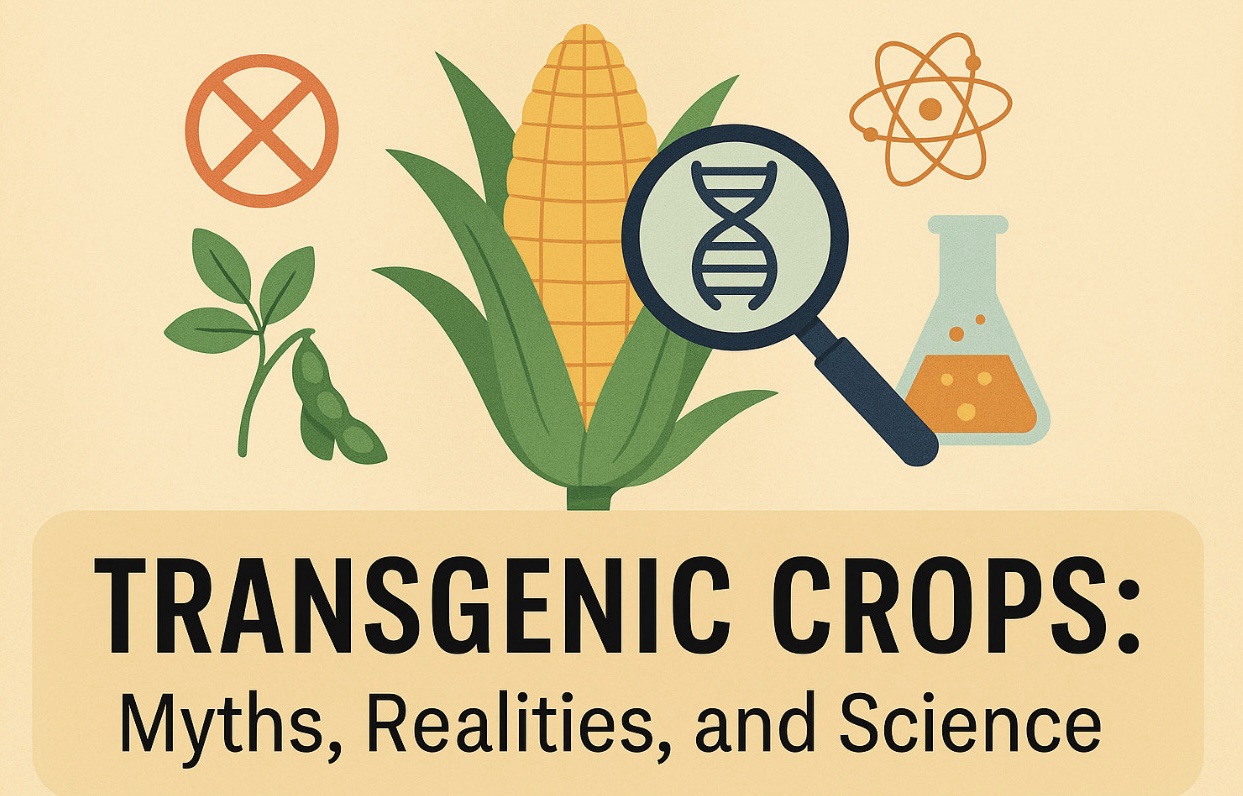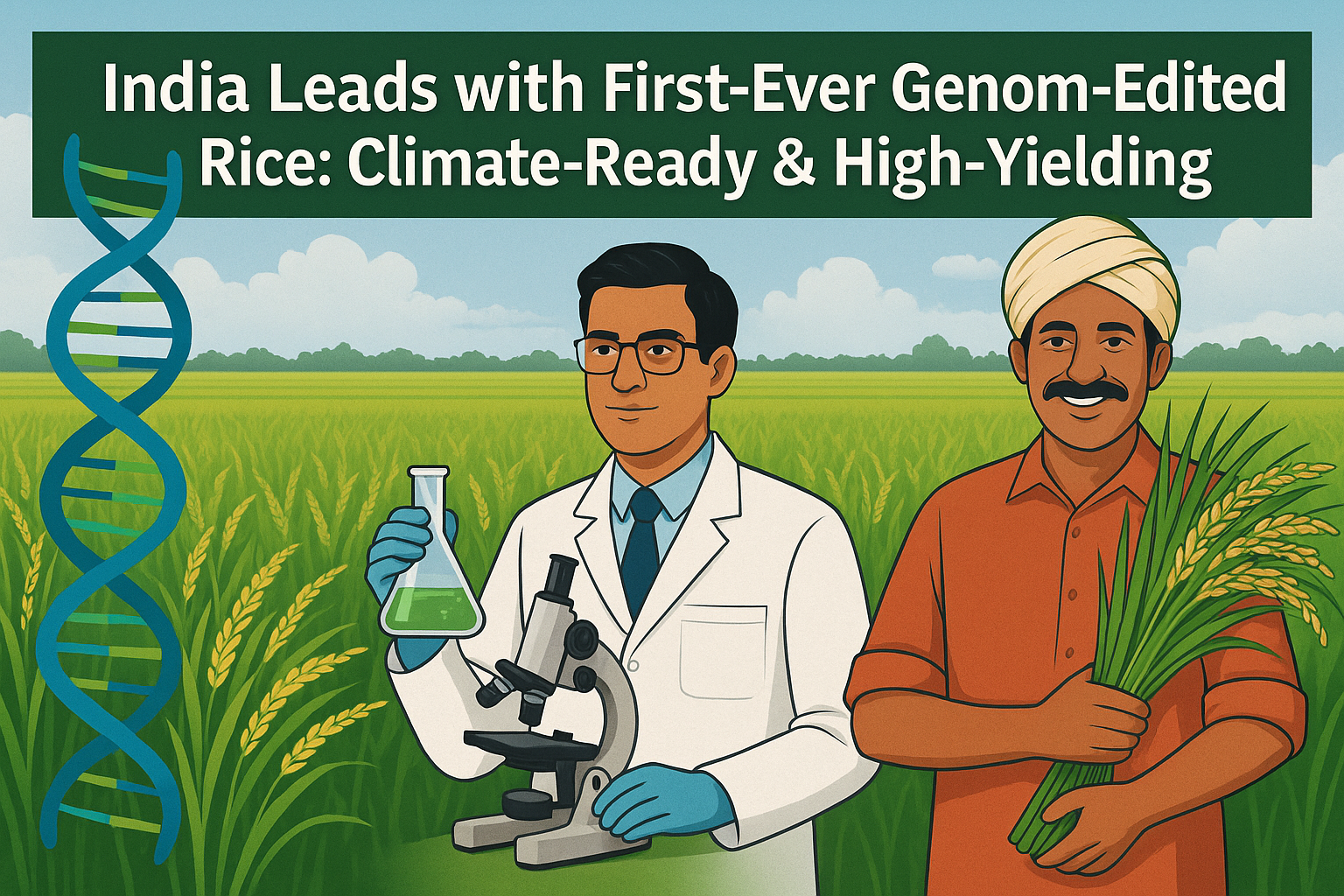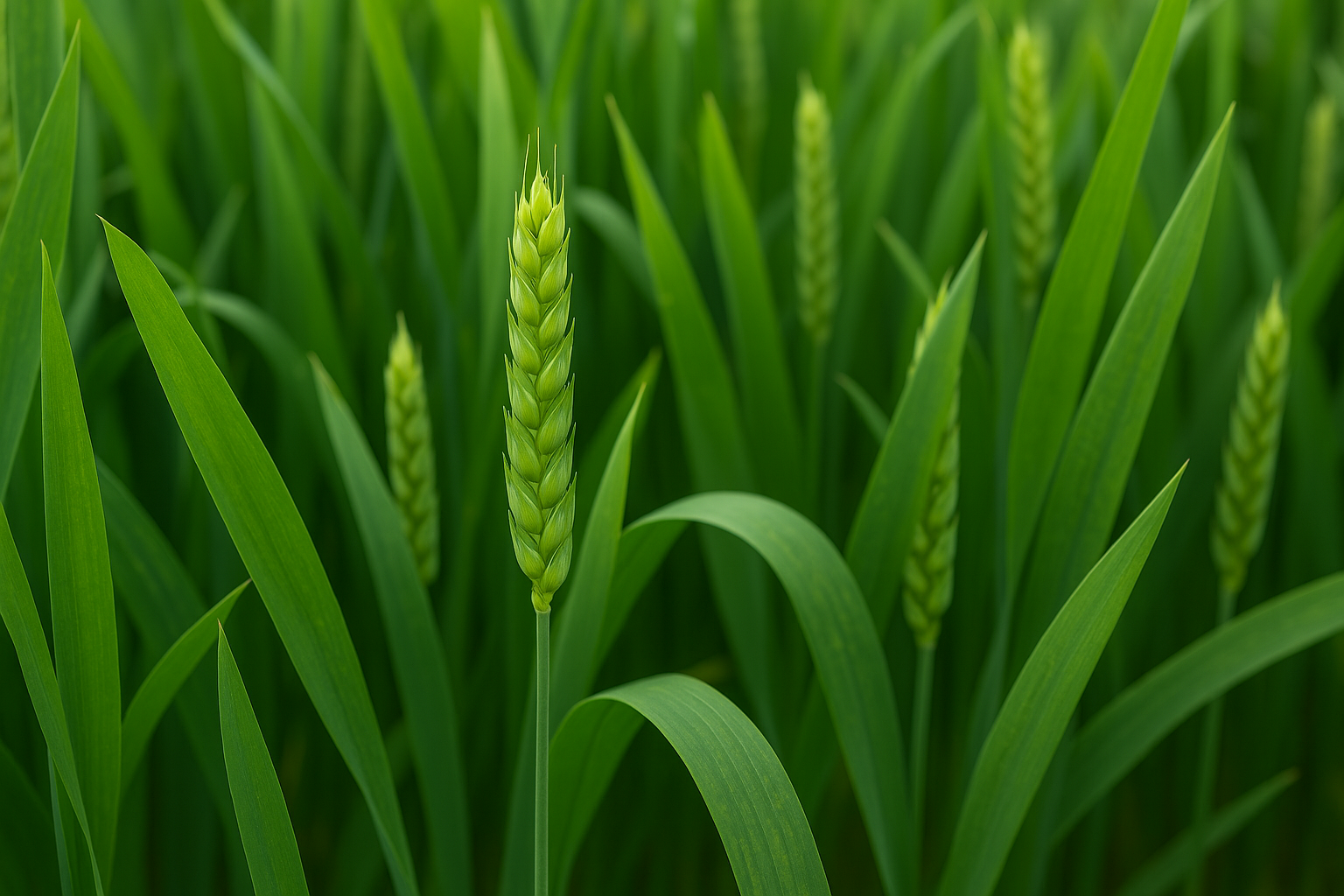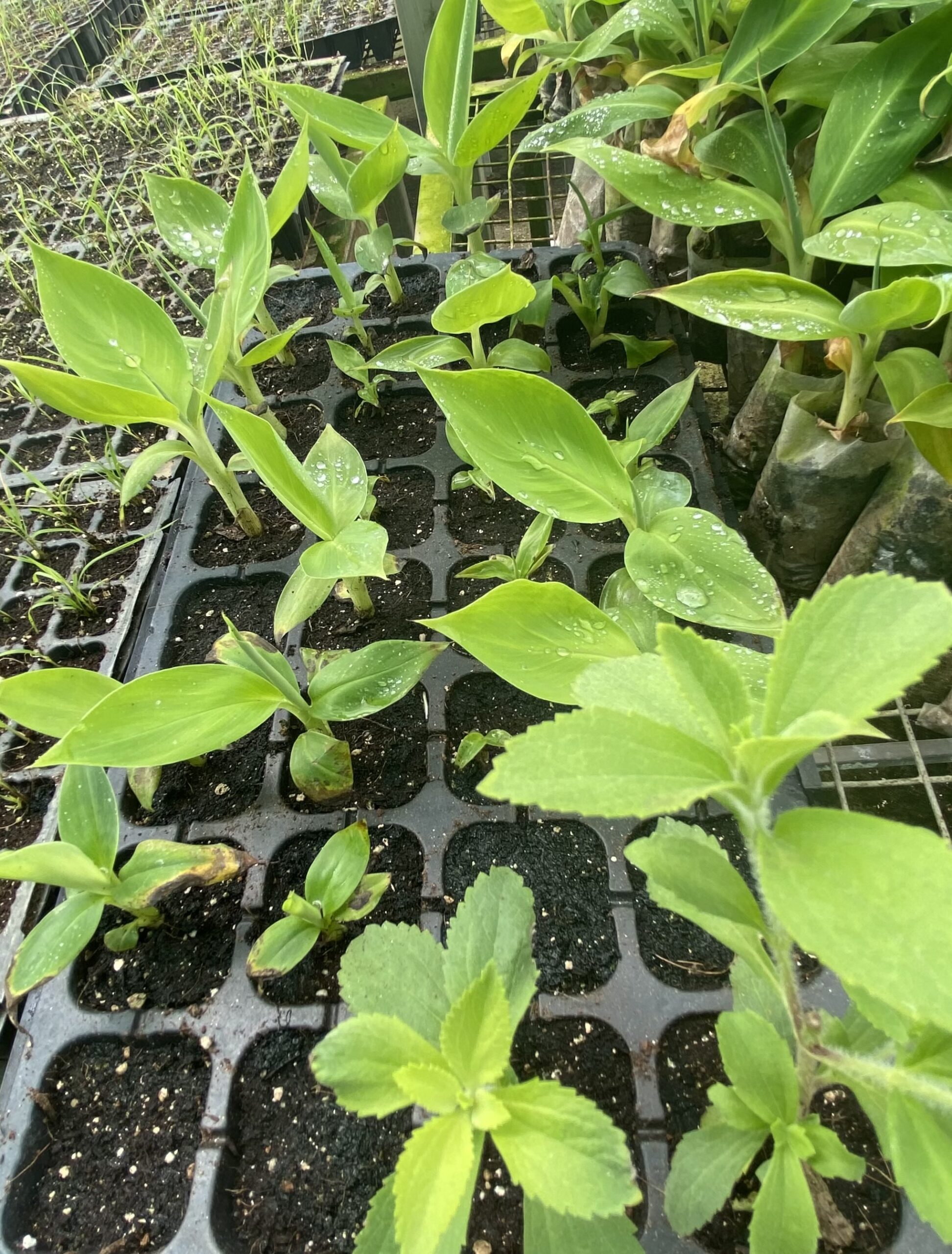The term “transgenic crops” often sparks heated debates across dinner tables, parliament halls, and scientific panels. To some, they represent the future of food security and sustainable agriculture; to others, a Pandora’s box of unknown risks. But what exactly are transgenic crops? Why have they stirred so much public curiosity, skepticism, and hope? In this blog, we untangle the myths surrounding genetically modified (GM) or transgenic crops and explore the science, safety, and socio-economic aspects behind them.
Understanding Transgenic Crops
Transgenic crops are plants that have been genetically modified using biotechnology to introduce specific traits—traits that are often difficult or impossible to achieve through conventional breeding. This process involves transferring a gene from one organism—be it a bacterium, another plant, or even an animal—into the genome of a target crop to bestow new characteristics such as pest resistance, herbicide tolerance, improved nutritional content, or drought resilience.
The technique uses tools like Agrobacterium-mediated gene transfer or gene gun technology to deliver the desired gene into the plant cell. Once incorporated into the plant’s genome, the gene becomes heritable, passing from one generation to the next. This enables the development of crop varieties with superior performance and adaptability.
Tracing the Origins of Transgenic Agriculture
The story of transgenic crops officially began in the early 1990s, although the groundwork was laid decades earlier with the discovery of DNA as the genetic material and the cracking of the genetic code. In 1994, the U.S. approved the first genetically modified food crop: the Flavr Savr tomato, engineered for delayed ripening. Although it was eventually pulled from the market due to commercial reasons, it paved the way for the introduction of crops like Bt corn, Roundup Ready soybean, and Golden Rice.
Today, transgenic crops are cultivated across millions of hectares in over 25 countries, with the largest acreage in the United States, Brazil, Argentina, Canada, and India. These crops include maize, soybean, cotton, and canola, among others.
Myth 1: Transgenic Crops Are Unnatural and Therefore Unsafe
One of the most common myths is that genetic modification makes crops “unnatural” and inherently dangerous. This fear stems partly from the idea of inserting foreign genes into plants, leading people to believe that the food might be toxic, allergenic, or ethically questionable.
In reality, humans have been altering the genetics of plants for thousands of years through traditional breeding, selection, and hybridization. Biotechnology merely offers more precision and speed. Moreover, all GM crops undergo rigorous safety assessments by national and international regulatory bodies before being released for commercial use. These evaluations test for toxicity, allergenicity, environmental impacts, and nutritional equivalence. To date, there is no credible scientific evidence linking approved GM crops to harm in humans or animals.
Myth 2: GMOs Are Only About Corporate Control and Profit
Another persistent myth is that transgenic technology is a ploy by big agricultural corporations to monopolize food systems and trap farmers in cycles of dependency. While it is true that multinational companies like Monsanto (now part of Bayer) have dominated the GM seed market, this is more a reflection of global patent laws and capitalist dynamics than of the technology itself.
There are numerous public sector initiatives, especially in developing countries, where transgenic research is being conducted for public benefit. For instance, the development of Bt brinjal in Bangladesh was led by government scientists in collaboration with international partners. Similarly, the much-debated Golden Rice—a rice variety enriched with provitamin A—was developed to combat Vitamin A deficiency in Asia and is being made available through non-profit channels.
The challenge, therefore, lies not in the science but in making regulatory frameworks and seed access equitable and transparent.
Myth 3: Transgenic Crops Lead to Superweeds and Pest Resistance
Critics argue that herbicide-tolerant and pest-resistant crops encourage overuse of chemicals, leading to herbicide-resistant weeds and pest resurgence. This concern is valid but applies to the way the technology is used, not the technology itself.
The overreliance on a single herbicide like glyphosate or a single trait like Bt toxin has, in some areas, led to resistant weed and insect populations. However, this is not unique to GM crops; resistance is a well-documented phenomenon in conventional agriculture as well. What’s needed is an integrated pest management (IPM) approach—rotating crops, using biological controls, mixing herbicides, and combining GM traits with good agronomic practices.
When managed responsibly, transgenic crops can actually reduce pesticide usage and promote more sustainable agriculture. For example, Bt cotton has significantly lowered insecticide use in India, benefiting both farmers and the environment.
Myth 4: GM Foods Cause Cancer and Other Health Issues
Perhaps the most fear-inducing myth is that consuming GM foods leads to cancer or long-term health effects. This myth has persisted due to misinformation campaigns and poorly designed animal studies that were widely publicized.
Global scientific consensus, including statements from the World Health Organization (WHO), the U.S. National Academy of Sciences, the European Food Safety Authority (EFSA), and the Indian Council of Medical Research (ICMR), affirms that GM crops approved for market are as safe as their non-GM counterparts. They undergo toxicological, nutritional, and allergenic testing. Long-term animal studies and meta-analyses have shown no increased risk from GM food consumption.
It is important to distinguish between fear driven by unfamiliarity and evidence-based concerns. Transparency in labeling and communication can help consumers make informed choices.
Reality: Environmental and Economic Benefits Are Documented
Beyond myths and fears, real-world data shows that transgenic crops have delivered measurable benefits. According to a 2022 report by Brookes and Barfoot, GM crop adoption between 1996 and 2020 led to a reduction in pesticide use by over 775 million kilograms and reduced carbon dioxide emissions equivalent to removing 15 million cars from the road annually.
Economically, GM crops have helped increase farmer incomes, especially in countries like India and China where smallholder farmers grow Bt cotton. These crops also contribute to yield stability under climate stress, offering a cushion in drought-prone or pest-infested areas.
However, benefits vary depending on crop, region, and implementation. It is not a one-size-fits-all solution, and complementary agricultural reforms remain essential.
The Ethics: Who Decides What’s Natural?
The ethical debate around GM crops often centers on philosophical questions: Should humans tamper with nature at the genetic level? Who gets to decide what kind of innovation is acceptable?
Such questions are not new. When the first vaccines were introduced, similar fears existed. As with any disruptive technology, the key lies in informed decision-making, ethical research practices, and public engagement.
Ethics should guide not only the creation of transgenic crops but also their distribution. Public participation in policy-making, inclusive seed systems, and benefits to underrepresented farming communities are critical components of responsible biotechnology use.
Transgenic Crops in India
India has had a cautious yet significant relationship with transgenic crops. Bt cotton was commercialized in 2002 and is now grown across more than 10 million hectares, making India one of the largest cotton producers globally. Farmers have reported better yields and reduced pest infestation.
However, progress with food crops like Bt brinjal and GM mustard has been slow due to political, legal, and societal pushback. Despite scientific clearance, Bt brinjal was banned in 2010 citing biosafety and socio-economic concerns. GM mustard was approved by India’s Genetic Engineering Appraisal Committee (GEAC) in 2022 but faced delays in rollout due to ongoing litigations.
The Indian experience highlights the importance of balancing science with stakeholder consensus. While regulatory caution is necessary, it should not stifle innovation based on unfounded fears.
The Future: New Frontiers in Crop Biotechnology
Transgenic technology is evolving beyond single-gene transfers. Modern gene-editing tools like CRISPR-Cas9 allow for precise modifications without necessarily introducing foreign DNA. These “gene-edited” crops are already being trialed for better disease resistance, enhanced nutrition, and climate resilience.
Moreover, research is now focusing on stacked traits (multiple genes in one plant), epigenetics, and synthetic biology to create crops that can not only survive but thrive under changing environmental conditions. The next era of plant breeding could bring protein-enriched rice, drought-proof wheat, and nitrogen-efficient maize to our farms.
But success depends not only on technology but also on trust—trust built through openness, scientific integrity, and inclusive dialogues.
Conclusion
Transgenic crops are neither miracle solutions nor environmental threats by default. They are tools—powerful, nuanced tools—that can help us address the complex challenges of food security, climate change, and sustainable agriculture. The myths surrounding them often arise from a lack of access to scientific knowledge and transparent policymaking.
As scientists, educators, and citizens, it’s our responsibility to question, learn, and communicate based on facts, not fear. Biotechnology alone won’t solve global hunger or ecological degradation, but when paired with agroecology, ethical governance, and farmer participation, it becomes part of the solution.
In the end, it’s not about “GMOs—yes or no?” It’s about asking the right questions: Is it safe? Is it equitable? Is it sustainable? With clear-eyed science and collective wisdom, we can cultivate answers that feed both people and the planet.










